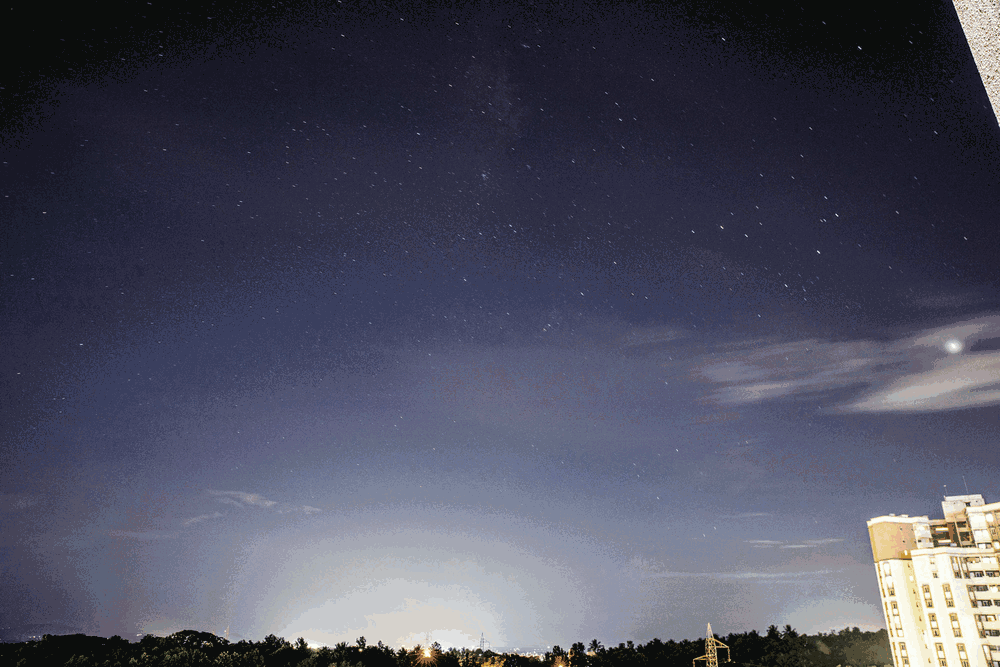An experiment to combine a time-lapse sequence of photographs of the night sky into one still photograph, while retaining only the stars and background.
To composite a star trail from multiple short-exposure photos taken of the night sky in clear weather, is possible most often by directly merging them into one using tools such as the "Lighten" layer blend mode in Adobe Photoshop & other software, which creates a composite using only the brightest pixels at the same location in all the layers (images stacked one over another). However, if a small light-grey / white cloud moved across the frame, it obscures that entire region in the merged photo, because it may be lighter than the stars/sky behind it. This hides a lot of detail in the photograph that was otherwise visible most of the time.
To composite the images effectively, the stars can be identified and selected by generating a segmentation mask of each frame. Only areas that have been masked will be able to potentially appear in the final image, after similar Lighten-blending. I attempted 2 different ways of doing this :
- script1.ipynb - Using OpenCV and image processing operations such as Convolution and Dilation
- script2.ipynb - Using Tensorflow and a CNN trained to generate such a mask from the image.
Both of the algorithms achieved their goal ! The output images, along with a comparison to the regular "control" method of compositing without any processing, are visible in each of the notebooks.
As expected, the images don't look as clean as a normal star trail because wherever the clouds did pass over any stars, they remain invisible in those pixels (the scripts don't generate image data or add artificial details, only remove information wherever necessary).
The Neural Network is a lot slower and lot more computatioanlly expensive, but produces a slightly cleaner result than the simple convolution kernel, which is quite fast but makes the star trails appear a bit grainy/broken.
I took the photographs and drew the masks used to train the neural network by myself. These are present in the data folder. I have made this repository public after placing them under a CC-BY-4.0 license. That license file is within the data folder and applies to its contents.
I don't wish to hold any copyright over the code (all .ipynb notebooks, .py files, etc, in this repo), so I released those under the Unlicense. That file is located in the root of this repository.
